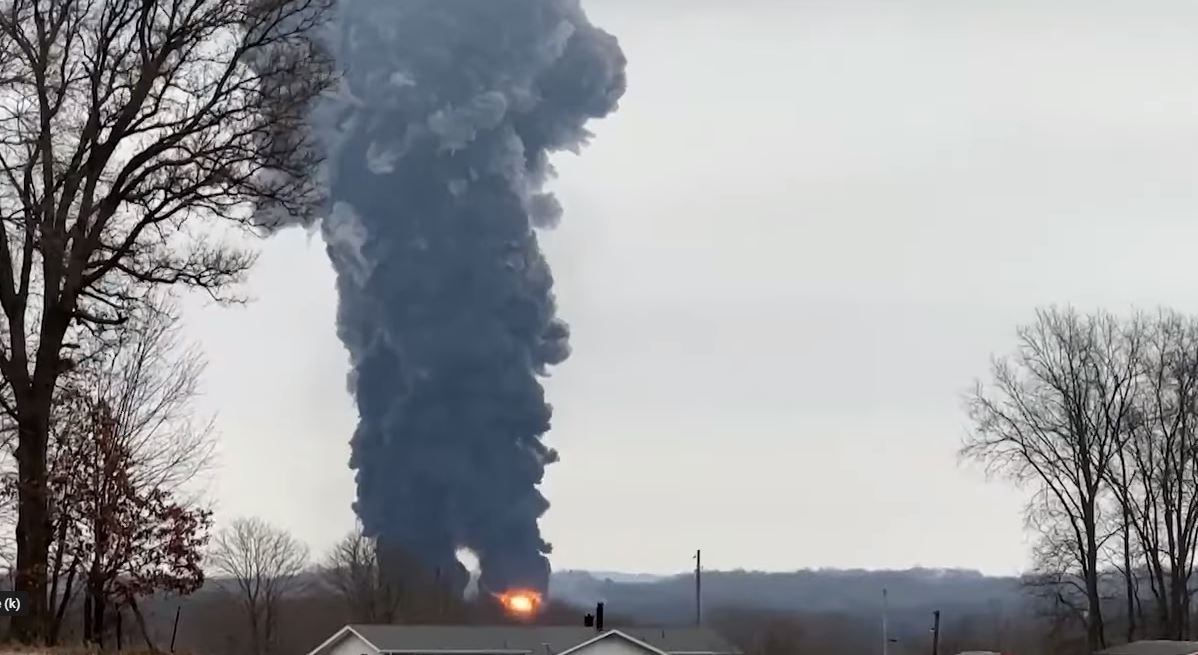The Norfolk Southern railroad’s own actions worsened a train wreck that ignited a toxic chain of disastrous events for the people of East Palestine, Ohio, according to employees and a lawsuit against the railroad.
Employees say the size of the train — 151 cars, 9,300 feet long, 18,000 tons – was a factor in the accident, according to a report from CBS that did not name the employees interviewed.
Employees also said the train had experienced trouble before the derailment. They said the train, which started its journey in Madison, Illinois, had broken down at least once before the Ohio accident, according to CBS.
The train was simply too long, an employee said.
“We shouldn’t be running trains that are 150 car lengths long. There should be some limitations to the weight and the length of the trains. In this case, had the train not been 18,000 tons, it’s very likely the effects of the derailment would have been mitigated,” one employee told CBS.
“The workers are exhausted, times for car inspections have been drastically cut, and there are no regulations on the size of these trains,” an employee said.
Norfolk Southern issued a statement saying, “the weight distribution of this train was uniform throughout” and included a mid-train engine “which helps manage the dynamic forces of the train.”
Jared Cassity, the national legislative director for one union representing Norfolk Southern workers, cast suspicion on the company’s procedures.
“There’s a good chance the car that derailed had not been properly inspected for some time,” Cassity said, according to CBS, claiming that company instructions allow inspections to last less than a minute.
“You combine that with the added length and tonnage, plus the fact that it had all this hazardous material, and this was predictable. If nothing changes, it will happen again,” he said.
The National Transportation Safety Board said last week it “identified and examined the rail car that initiated the derailment,” and that surveillance video “showed what appears to be a wheel bearing in the final stage of overheat failure moments before the derailment.”
Norfolk Southern is facing a class-action suit in connection with the derailment that said the derailment and toxic cloud that eventually enshrouded East Palestine, Ohio, “would never have occurred if not for failure on top of failure by Norfolk Southern.”
“Train 32N should never have been operated in such a reckless manner that its wheel bearings would fail and cause derailment of a train carrying highly toxic and combustible substances. Even after derailment, the integrity of cars containing highly toxic and combustible substances should not have breached, and emergency pressure relief valves should have functioned as designed,” the suit states.
“Nevertheless, Norfolk Southern layered on yet more failures once it found its derailed train at imminent risk of catastrophic detonation. Norfolk Southern blew holes in its vinyl chloride cars and dumped 1,109,400 pounds of cancer causing Vinyl Chloride directly into the environment,” the suit states.
The suit sought to put the incident into perspective.
“Norfolk Southern discharged more cancer-causing Vinyl Chloride into the environment in the course of a week than all industrial emitters combined did in the course of a year,” the suit said, noting that setting vinyl chloride on fire creates deadly phosgene gas that has been banned ever since its use as a chemical weapon in World War I.
“Norfolk Southern ignited a 1 million pound plus chemical burn pit that burned for days and covered Plaintiffs and Class Members in a large plume of thick black smoke. A mushroom cloud resulted from the blaze, dispersing toxic chemicals for miles and across State lines into Pennsylvania,” the suit said.
The suit said the railroad subjected “surrounding communities to chemical warfare agents” and “instead of cleaning up its mess, Plaintiffs and Class Members have been exposed to toxic and noxious chemicals.”
Norfolk Southern suffered another derailment last week, according to CBS. About 30 cars came off the track in Van Buren Township, Michigan.
This article appeared originally on The Western Journal.

